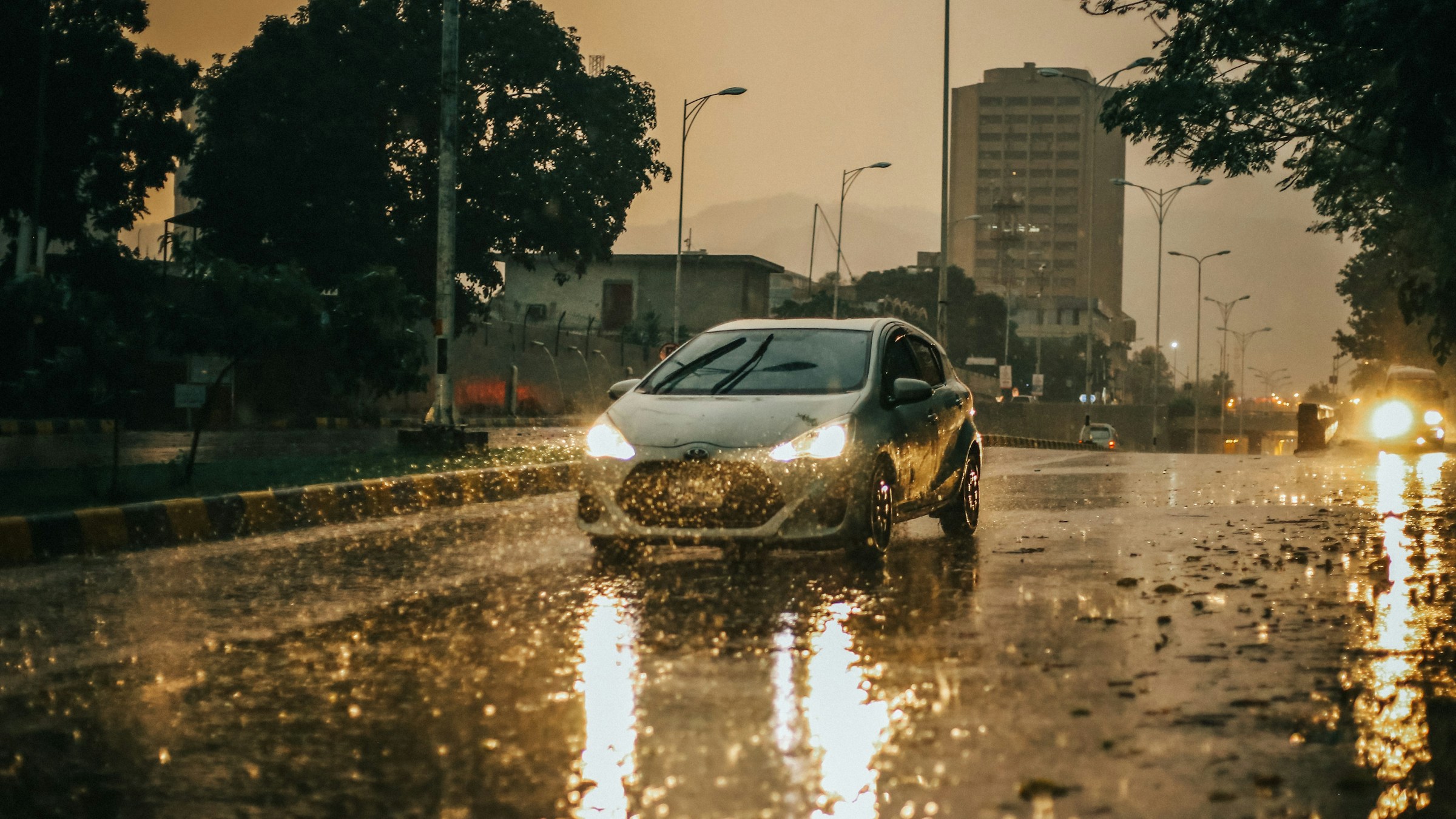Driving during a downpour can be one of the most challenging and risky situations a motorist can encounter. Heavy rain not only reduces visibility but can also lead to slippery roads, increasing the risk of hydroplaning and accidents. Understanding how to prepare for and respond to these conditions can be the difference between a safe drive and a moment of tragedy. Developing smart habits can make rainy day driving safer and more manageable.


Ensure Your Vehicle is Prepared
Before embarking on a journey in rainy conditions, it’s critical to check your vehicle thoroughly. Start by inspecting the windshield wipers, which should be in good condition and capable of effectively clearing rain from the glass. Replace old or worn-out wiper blades to avoid streaks and reduce visibility. Ensure that all lights, headlights, taillights, and fog lights are functional to enhance visibility for both you and other drivers.
Tire condition is equally important. Tires with sufficient tread depth are important for maintaining traction on wet surfaces. Consider using the penny test. If you can see the top of Lincoln’s head, it’s time for new tires. Maintaining proper tire pressure contributes to better handling, particularly when navigating through puddles, where the hazards of rainy-weather driving increase dramatically.
Utilize Your Headlights
Using headlights during rain is not just about seeing better. It’s also about being seen. Many states require drivers to turn on their headlights whenever windshield wipers are in use. Properly functioning headlights can significantly enhance visibility during a downpour, allowing you to spot potential hazards well in advance. Rain can create significant glare on wet surfaces. Utilizing low beams helps reduce this glare compared to high beams, which can reflect off of precipitation.
Driving in wet conditions requires greater awareness and preparation. Given the risks involved with driving in the rain, it’s important to use every tool available to improve visibility and reaction time. Fog lights, if you have them, should be used in heavier rain as they provide wider illumination, helping you better discern the road ahead. Ensuring your vehicle is well-lit not only aids your visibility but is a responsible habit that contributes to safety for all road users.
Adjust Your Driving Speed
One of the simplest yet most effective habits for safe driving in the rain is to reduce your speed. Wet roads can significantly decrease your tires’ grip on the pavement. The faster you’re driving, the more distance you’ll need to stop, which can be critical during a sudden downpour. It’s crucial to gauge the conditions and adjust your speed accordingly. Remember, the rain causes water accumulation on the roads, often leading to pooling and slippery spots.
Drivers should maintain a safe distance between vehicles, allowing ample time to react in case of an emergency. Increasing the following distance helps counteract the increased stopping distance caused by wet conditions. It’s advisable to follow the two-second rule in good weather, extending it to at least four seconds during rain to provide extra space and time for reaction.
Maintain a Safe Following Distance
Maintaining a safe following distance is particularly important in wet conditions. As mentioned, after rain begins to fall, water mixes with oil and residue that has accumulated on the road surface, making it exceedingly slippery, especially in the first few minutes of a downpour. This impacts your ability to stop quickly. To avoid rear-ending another vehicle, increase your following distance. Ideally, aim for at least four seconds between vehicles during rainy weather rather than the usual two seconds needed in dry conditions.
Giving yourself plenty of space allows for better reaction time. This distance helps you anticipate the actions of the vehicle ahead of you, providing you a buffer to respond accordingly if they brake suddenly. Driving defensively is a key habit to adopt, particularly in adverse weather when visibility and traction are compromised.
Practice Anticipatory Driving
Anticipatory driving involves being proactive rather than reactive. This means being mindful of the environment around you and adjusting your driving habits accordingly to prevent accidents before they happen. Watch for puddles that could potentially hide debris or create hydrodynamic effects if driven through at high speed. When you see brake lights ahead, slow down and prepare for any sudden stops. The fewer surprises you encounter, the safer your driving experience will be.
It’s critical to stay alert and avoid distractions. Rain can amplify the anxiety of your surroundings and diminish your focus. Keep your eyes on the road, and avoid phone use or other distractions that can detract from your situational awareness. Any lapse in attention, especially during a downpour, could put you and others at risk.
Know When to Pull Over
Sometimes, the best option is to pull over and wait for the rain to subside. If visibility drops drastically due to heavy rain, it’s wise to seek a safe location to stop. Use your hazard lights to alert other drivers that you are slowing down and let them know of your situation. Pulling over onto a side road or into a parking lot can provide a safe refuge until the storm passes or road conditions improve. Do not stay on the highway if you cannot see more than a few feet in front of you, as this significantly raises risks.
While waiting, ensure your vehicle is in a safe position. Turn off your engine, roll down the window slightly for ventilation, and avoid blocking traffic. Keep your phone charged in case you need to contact someone for assistance. This approach can help you assess when the rain diminishes to continue your journey safely.


Stay Aware of Weather Conditions
Before heading out, checking the weather forecast can save you time and stress on the road. Be aware of any warnings or advisories in your area regarding heavy rain or thunderstorms. Weather apps often provide real-time updates and alerts that can influence your driving plans. If you find that severe weather is imminent, consider postponing non-essential trips until conditions improve.
Weather conditions can change quickly, especially when storms occur. If you’re already on the road and notice decreasing visibility or increased rainfall, adapt your driving strategy. Reducing speed, increasing following distance, and enhancing vehicle lighting are all strategies that can help minimize accidents in response to changing weather.
Understand the Risks Involved
Every driver should recognize the hazards of rainy-weather driving. Reduced visibility, slippery roads, and unpredictable conditions heighten the chances of accidents. Ensure your brakes are in optimal working condition, as wet roads can impede braking power. Even a slight delay in response can lead to unintended consequences, making it vital to practice caution and awareness.
By recognizing the dangers of a rainy drive and adopting smart habits, you can greatly reduce the chance of accidents. Always stay aware of your environment and the actions of other drivers to maintain control of your situation and navigate through the rain with confidence.
Driving in heavy rain demands extra caution, awareness, and preparation. By adopting these smart habits, you can improve your control, increase visibility, and reduce the likelihood of accidents. Staying calm, adjusting to road conditions, and knowing when to pause your journey can make all the difference when navigating a downpour safely.
Article Last Updated: July 8, 2025.


